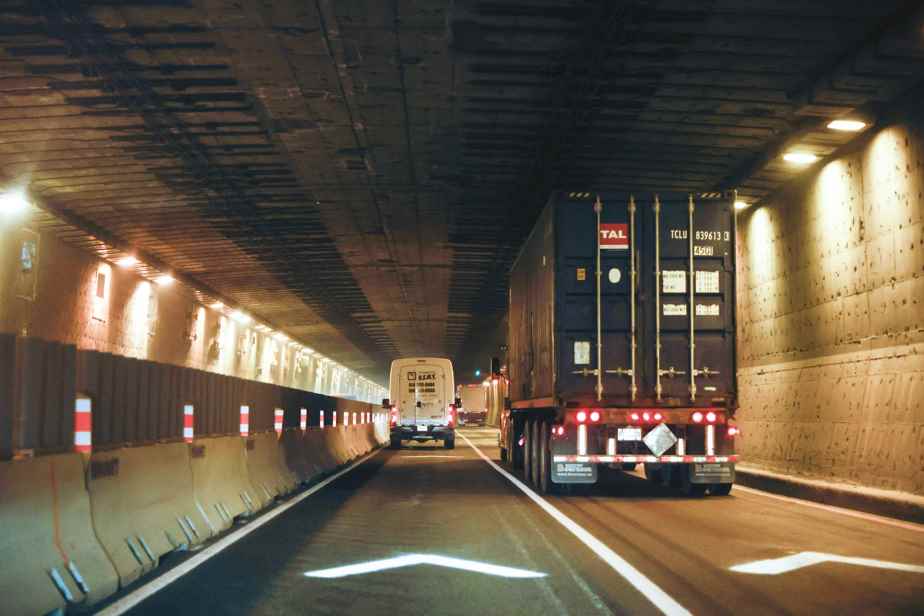An operation to plug a “significant pothole” forced the closure of access to the entrance to Île Charron, in the Louis-Hippolyte-La Fontaine tunnel, on Thursday, thus considerably lengthening travel times in the area.
“Our teams have already started the first stages of sealing. The pothole is really located at the level of the shoulder, not at the level of the traffic lanes, ”said the spokesperson for the Ministry of Transport and Sustainable Mobility, Sarah Bensadoun, at the start of the day.
By the way, M.me Bensadoun recalls that “freezing and thawing cycles strongly affect the condition of the roadway”. The extreme cold that hit Quebec last weekend could therefore be behind the formation of this imposing hole in the road.
On social networks, the ministry said Thursday that the clogging operation also forced the removal of a traffic lane on Highway 25 northbound. The entrance to Charron Island was finally reopened around 9:30 a.m., after rush hour.
Nevertheless, at the start of the day on Thursday, the waiting times were abnormally long at the approach to the tunnel, on the South Shore. In the Longueuil sector, on route 132, it took about 1 hour 20 minutes to get to the infrastructure and thus access the island of Montreal.
In the other direction, however, the times were much shorter: on Highway 25, for example, motorists only had to wait about twenty minutes to reach the tunnel towards the South Shore.
It is not yet known how long the patching work will last. The MTMD says the planned closures will be for an “indefinite period”.
Via its Twitter account, the Louis-Hippolyte-La Fontaine tunnel consortium recalled that this type of closure “is necessary to ensure the safety of users”. When possible, closures “are planned for weeknights and in collaboration with our partners in order to have a minimum impact on users”, it is however indicated.
Last Sunday, The Press reported that three months after the partial closure of the Louis-Hippolyte-La Fontaine bridge-tunnel, the Plante administration is concerned about the “increasing transit traffic” generated by the megaconstruction site in certain neighborhoods. In addition to traffic calming measures, Montreal is calling in particular to quickly multiply photo radars, an idea that the Minister of Transport, Geneviève Guilbault, promises to tackle soon.
Quebec also installed at the end of January photo radars on the megasite of the Louis-Hippolyte-La Fontaine tunnel, the speed limit seeming to be exceeded by some motorists. About twenty accidents have been recorded since the start of the work, often due to speed. “When there is no traffic in the evening, people go too fast. This is what was observed by the Sûreté du Québec. And since there are workers 24 hours a day, seven days a week, safety issues are very present,” illustrated another MTMD spokesperson, Gilles Payer.
For the moment, in Quebec, there are 54 photo radars, of which 30 are fixed and 24 are mobile, thus being able to be moved on the territory if necessary. It is in itself much less than elsewhere. A meeting is scheduled soon between Valérie Plante and Geneviève Guilbault, in Montreal. The issue of road safety should be at the top of the priorities.
